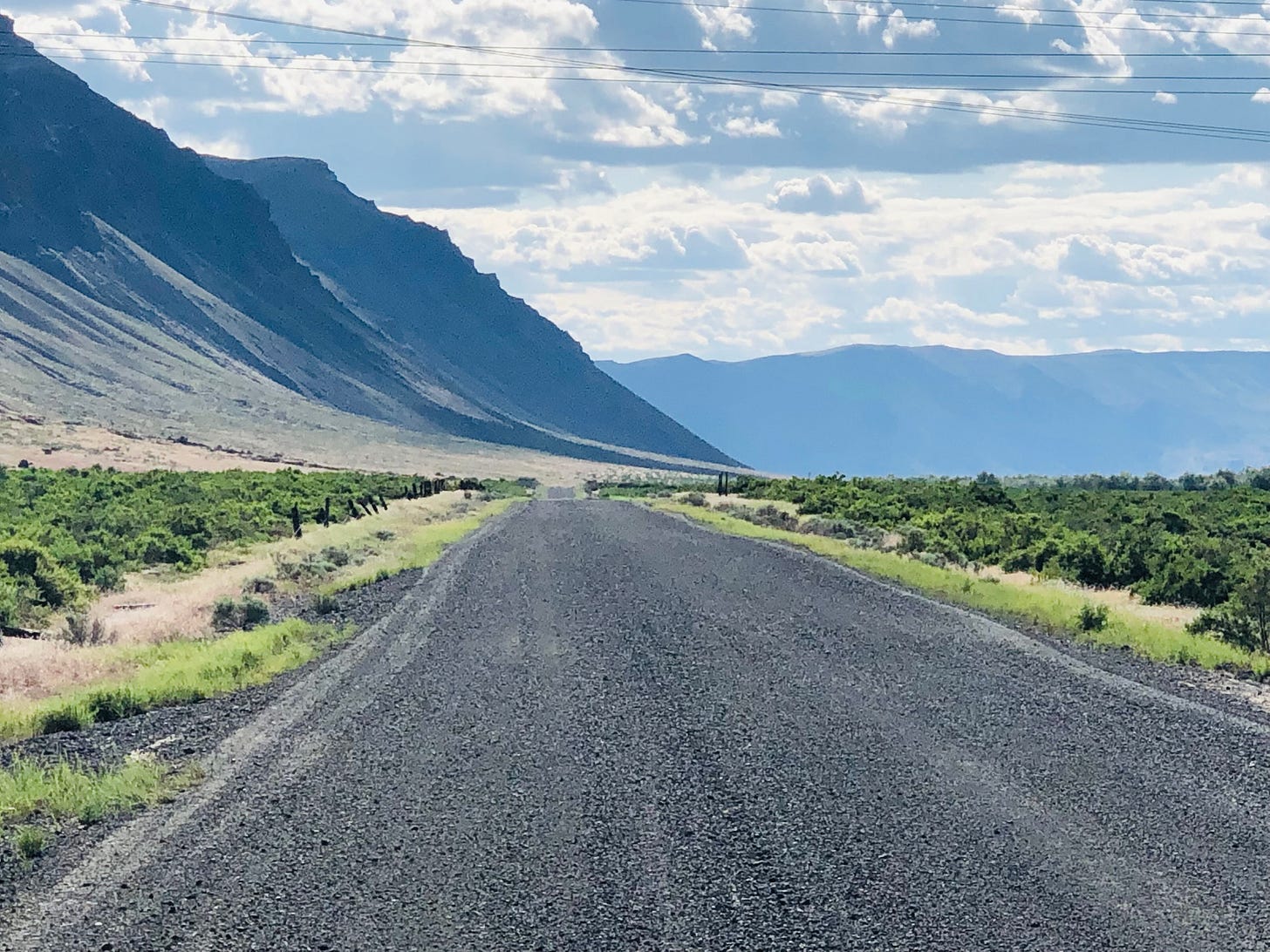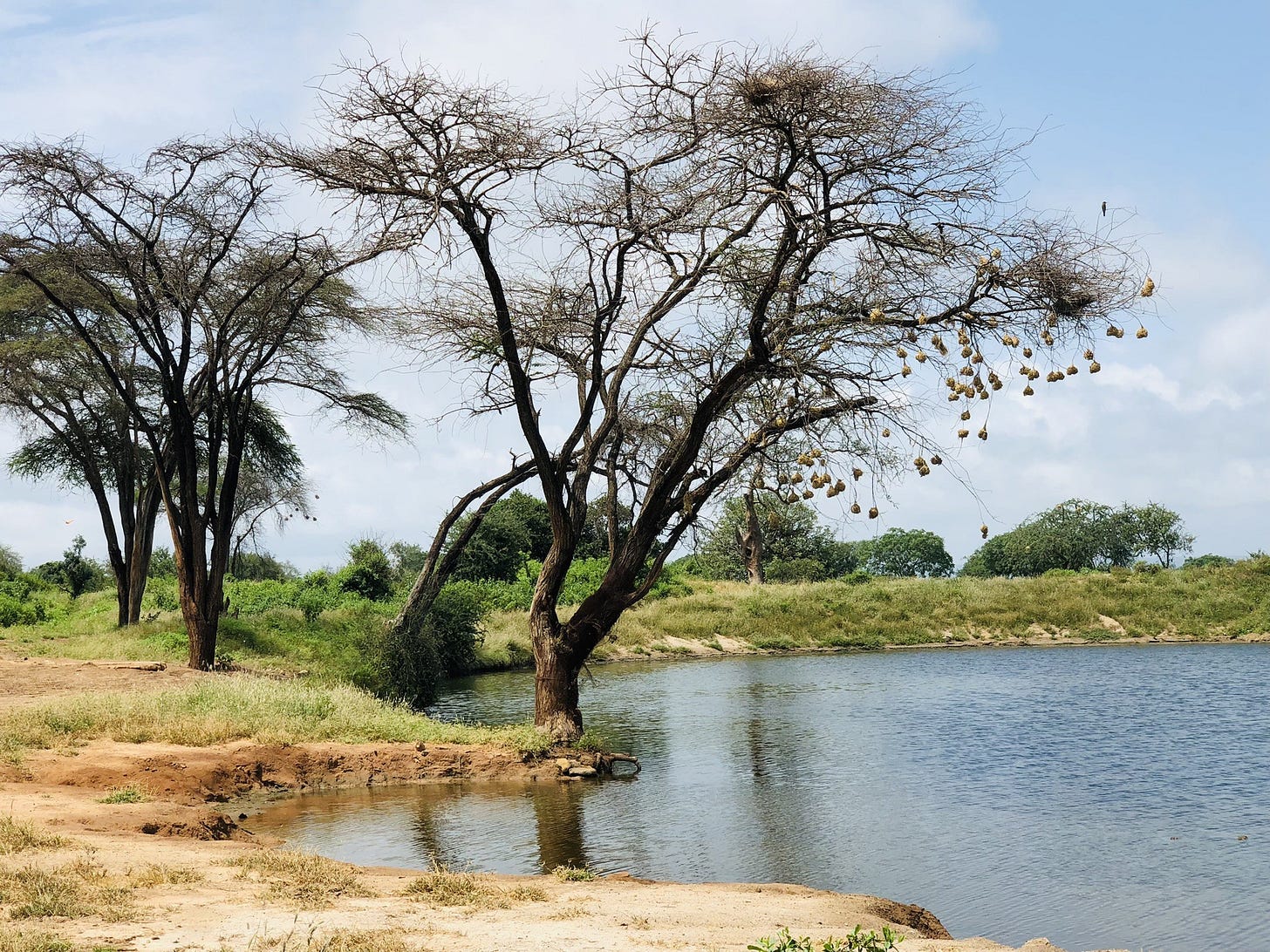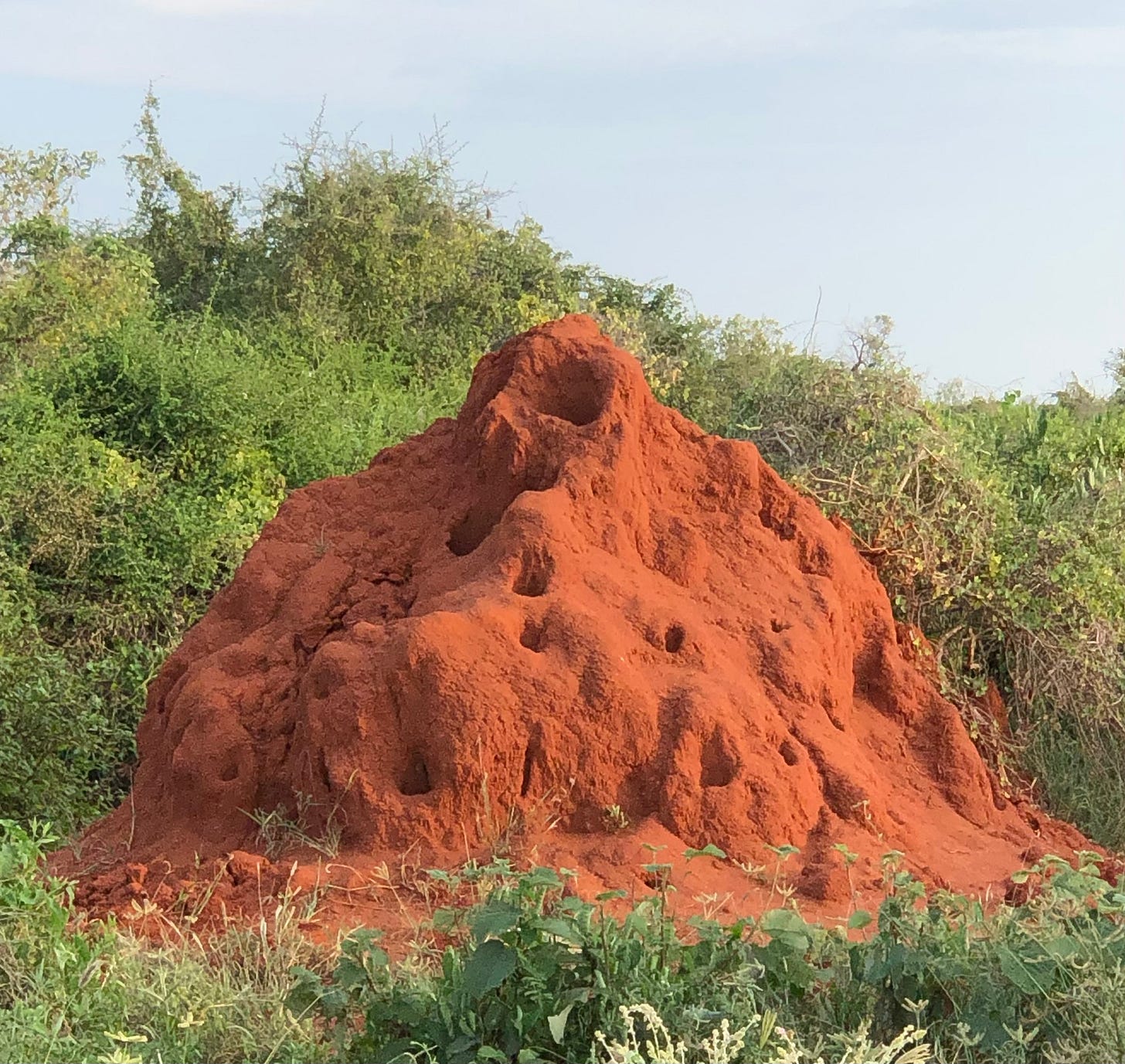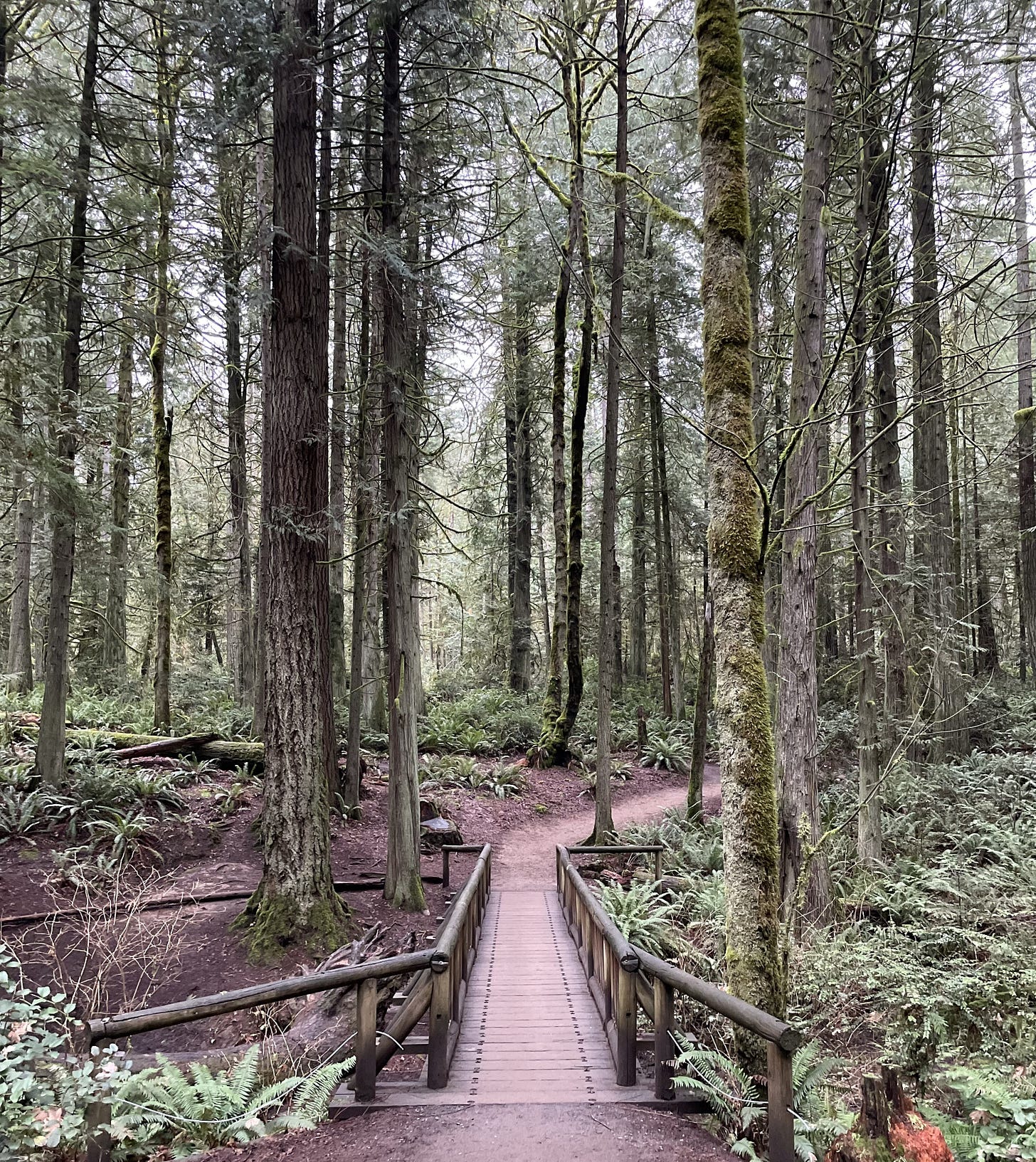"What you are, the world is. And without your transformation, there can be no transformation of the world." ~ J. KrishnamurtiYears ago, I was attempting to beautify the yard of a dispirited rental house by installing a flower garden in a long neglected and rock strewn planter box. My landscaping budget and expertise were equivalently scant, making the task all the taller.
I’ll never forget stepping back to admire the fruits of my labor only to realize that the entire interior of the garden remained earthen bare. Ever nimble on his feet with a quip, my partner surveyed the strangely symmetrical scene alongside me and said with his characteristic deadpan delivery, “Border plants don’t always have to go on the borders, you know.”
We thoroughly enjoyed the moment (and it’s been an inside joke between us ever since). But we also recognized a deeper meaning in the exchange.
And an illustrative one. What is it about the center of things that can elude us? Limiting ourselves—and others—to the pent peripheries of what we seek, or have the potential to create and become.
Centers, of course, are requisite to life. Hearts and headquarters, meccas and middle-grounds. Essential epicenters, surrounded by far reaches in all directions, steadfastly serving as places for even the most disconnected to gather. Waterholes in the desert where predators and prey honor the necessity to slake their thirst though it means coming together in a dangerous detente.
It calls to my mind the healing concept of “the middle way”—or “middle path”—which encourages a more mindful and clear-seeing view of the often paradoxical nature of life and its concurrent mysteries of interconnectedness and impermanence. Steep as the slope seems (and often is) to reach this vantage point, author and teacher Jack Kornfield has dexterously described how “in the middle way, we come to rest in the reality of the present, where all the opposites exist.”
In dialectical thinking a similar striving has been dubbed the both/and concept (in lieu of the less forgiving but far more enticing and widely used either/or)—meant to cultivate and increase our capacity for holding two opposing ideas in a state of synthesis.
And, yes, this can be as confounding as it sounds. We’re not taught to think this way even though it reflects actuality much of the time.
My first memorable encounter with the living practice of non-dualism was a lecture that included a reverent reference to the indigenous Huni Kuin (“true people”). They still inhabit the Amazon rainforests of Brazil and Peru despite nearly being driven to extinction by commercial demands for beef, soy (grown for cattle not humans), timber, rubber, and so much else in the rapacious maw of the supply chain.
Due to dense smoke from the ongoing destruction of their venerable broad-leaf jungle home, the Huni Kuin often go long stretches without being able to see any blue sky above. Yet under that industrial ashen smog their leaders teach, propagate, and inhabit the ancient concept of só alegria, or only joy, as daily discipline and cultural endurance; and resistance.
A vital perspective, born of profound wisdom, that carves out space for hope and transformation in the direct presence of fragmentation and indeterminate loss. An active embodiment of the powerful recognition that bliss and despair are intertwined at their roots and breathe the same air. As Kahlil Gibran put it so poetically, “Our joy is our sorrow unmasked . . . they are inseparable.” We too easily forget that they are sisters.
I don’t know about you but this is still right about where I tend to get stuck in the muck of my western-influenced and linear leaning mind. My resistance to chaos is deep-rooted. Those regimented rows of edge-bound “border plants” are a good benign example.
Our harrowing headlines too, although far less benign—replete with often arbitrarily drawn boundaries and seemingly endless iterations of us and them heartlessly dueling it out. Sometimes it seems most of humanity has become lost in the borderland skirmishes that consume more of our world and its hallowed habitat and brilliant beauty every new day.
Which only increases my appetite for one of J. Krishnamurti’s (quoted above) foundational assertions that “truth is a pathless land.” We forget this too. Yours and mine; the one and the many. Effortlessly simple and exponentially not. Just like life.
It occurs to me that nobody models the middle way more proficiently than the elaborately complex planet whose elements are ever combining and separating in the arc of life and death. Balance, and co-existing dualities, are at her very essence. And our own, if we look a little closer. As the Huni Kuin did long ago.
In East Africa, for example, the savannah ecosystem depends upon an ancient symbiotic ballet danced by two of the most unlikely enjoined creatures: tiny termites and enormous elephants. Nutrients are mined from the arid landscape, elephant dung included, and deposited by a multi-tasking colony of tireless worker ants in extensive underground tunnels. When elephants browse and dig up foliage rooted in these nutritious (and delicious!) mineral rich red ochre “living castles,” they excavate entire water holes which sustain countless species in the dry season. When water is most scarce and the margins between life and death are razor thin.
What I might love most about the termite-elephant choreography is the life-preserving landscape transformation these two keystone species achieve simply by being true to themselves. A pair of stark contrasts living as they are meant to, in surprising tandem, sets an entire ecosystem spinning right in the circle of life.
We could learn so much.
Because as Krishnamurti astutely observes: “what we are, the world is.” What may be the more pressing point for humanity right now, I can’t help but lament, is that what we aren’t, the world isn’t.
It’s heavy, but I consider the weight of this responsibility welcome news.
A roadmap of sorts to the middle path that calls each of us personally to inhabit the balance that has been lost in a world askew with so much finger-pointing about the doom and gloom, claim and blame that are carving up creation and searing all souls.
In a stroke of serendipity I recently discovered poignant thoughts about this same searing truth (and simultaneous antidote):
"[Nature-adoring U.S. Poet Laureate (1995-97) Robert Hass]. . .once gave koanlike expression to our plight along the lines of: we are the only protectors, and we are what needs to be protected, and we are what [the world] needs to be protected from.
Yet the excruciating sharpness of the dilemma he sketched out has an exquisite roundness at its heart, for exactly equally, we cannot harm the Earth without harming ourselves; we cannot heal the Earth without healing ourselves; we cannot protect the Earth without protecting ourselves."
~ Susan MurphyWhat a fit frame for the doorway into our present reality in all of its convoluted contradictions; whose ruin and renewal stem from the same source.
Equally ours to profess and transform.
Both, and.
"We but mirror the world... If we could change ourselves, the tendencies in the world would also change." ~ Mahatma Gandhi 






Much to think about here. M’s quip about the border plants really made me chuckle.
And what you said about what we aren’t, the world isn’t either. There is definitely a responsibility for us to model what we want to see. Unfortunately, we can’t change the people that don’t see it that way and are modeling a world that is uninhabitable and non-sustainable. But we each can do our part.
Thank you for the beautiful part you play !
Love this!! Have been thinking a lot about the power of the both/and ethic lately. Thank you for communicating it so beautifully and bringing your lived experience!